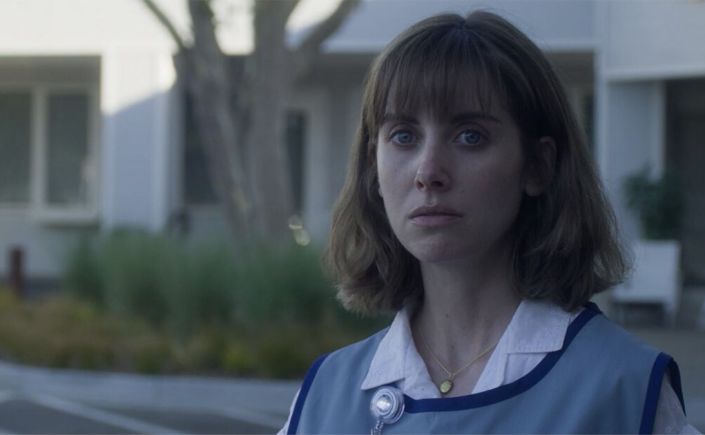Being trapped in quarantine means being trapped inside your own head for a lot of people, so what better way to stimulate the mind than a film about a psychological breakdown? No, Alison Brie does not neigh.
⭐ ⭐ ⭐
Corey Hogan
Shy and introverted Sarah (Alison Brie) lives an unglamorous life, spending her days working at a craft store and her evenings alone watching reruns of her favourite cop show. Her peculiarities begin to frustrate those around her – particularly the stable owners of a horse that was once hers (who she continues to visit), and her roommate Nikki (Debby Ryan), who sets Sarah up with her boyfriend’s roommate in an attempt to get her out of the house. But Sarah’s issues boil much deeper below the surface, and as her weird ticks turn into sleepwalking, losing time and seeing people from her dreams, she begins to succumb to paranoia and slowly lose her mind.
If you’ve only ever witnessed Alison Brie as Community’s compulsive, naïve over-achiever Annie Edison, or in her myriad of supporting romantic comedy roles, her anxiety-addled turn in Netflix’s Horse Girl is likely to rattle you at least a little. Directed by Jeff Baena (Life After Beth, The Little Hours) and co-written by Brie and Baena, it’s a brave and mature departure from the bubbly, fluffy characters that have become her repertoire, as well as her grittier work on Mad Men and Glow.
Flawed though her first screenplay may be, it’s certainly ambitious in how it tackles untreated schizophrenia. Initially sympathetically nice, but weird enough to be someone you’d keep at arm’s reach, Brie owns and eats up her loner Sarah. She’s the kind of socially awkward girl you feel sorry for, yet there’s always something slightly unnerving behind her doe-eyed stare.
Descents into madness have been done many a time before, but Brie keeps the anxiety high as she slowly unravels unpredictably, from little oddities like sleepwalking and glaring at the wall in the middle of the night, to full-on meltdowns raving about alien abduction and taking her date to a cemetery to dig up her mother. It’s startling and occasionally shocking stuff, and Brie fully commits to it.
Unlike her performance though, she can’t fully commit to her psychological subject. After an interestingly uncertain first half, Horse Girl twists and makes a tonal shift into the surreal that only confuses things and fails to delve deeper into its heavy topic. You could argue this is an artistic decision to put the viewer into the subject’s fractured mindset, but it only serves to frustrate with a lack of answers to any of the intriguing conspiracies it sets up.
Brie paints an earnest and at times somewhat stimulating portrait of a terrible mental condition, but in tackling such a ripe subject, it winds up being scattered and can’t help but feel lacking.
Horse Girl is available on Netflix in Australia
Image courtesy of Netflix Inc Australia














